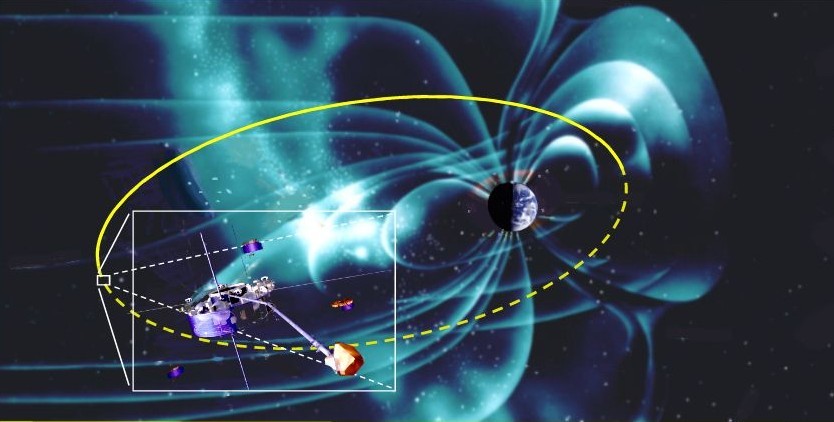
The spacecraft formation may be an equilateral tetrahedron in the Magnetotail Plasma Sheet, near the centre plane of the magnetotail. At the magnetopause, one plane is to be aligned with the expected orientation of the surface. The spacecraft separation while the formation is an equilateral tetrahedron may be about 2000 to 5000 km. Note that the spacecraft formation evolves around the orbit - a natural consequence of the spacecraft following slightly different orbits. The spacecraft will follow these orbits for about six months, until Phase 3 begins.
The equliateral tetrahedron is the best formation for deriving vector quanitites using the gradients of quantities measured at each spacecraft. Other formations may be more useful for different purposes.
above: Cluster Phase 2 orbits (click to enlarge)
left: Cluster phase 2
orbits
(click to enlarge)
(Image source : Escoubet, C.P., R. Schmidt and M.L. Goldstein, Cluster- science and mission overview, in The Cluster and Phoenix Missions, Kluwer Academic Publishers, 1997 - reprinted from Space Science Reviews vol 79, v-vii, 1997.)
By Andrew Fazakerley
Last Updated on26/06/00